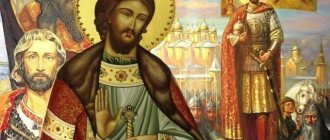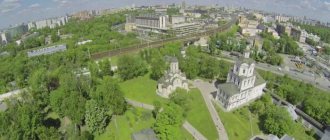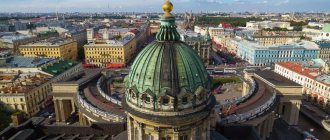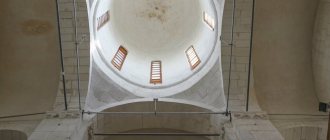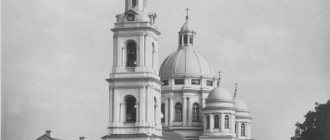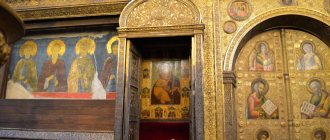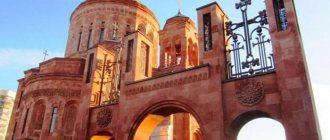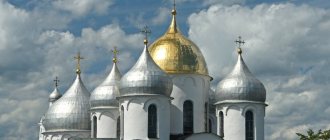Mir
Russia Republic of Crimea Simferopol Cathedral of St. Prince Alexander Nevsky (Simferopol) Map is loading…
{"format":"leaflet","minzoom":false,"maxzoom":false,"limit":50,"offset":0,"link":"all","sort":[""], "order":[],"headers":"show","mainlabel":"","intro":"","outro":"","searchlabel":"\u2026 \u0441\u043b\u0435\ u0434\u0443\u044e\u0449\u0438\u0435 \u0440\u0435\u0437\u0443\u043b\u044c\u0442\u0430\u0442\u044b","default":"","import-annotation":false,"width ":"auto","height":"350px","centre":{"text":"","title":"""link":"""lat":44.952914301622996617879834957420825958251953125,"lon": 34.09806694539700089308098540641367435455322265625,"icon":""},"title":"","label":"","icon":"","lines":[],"polygons":[],"circles":[ ],"rectangles":[],"copycoords":false,"static":false,"zoom":8,"defzoom":14,"layers":["OpenStreetMap"],"image layers":[] ,"overlays":[],"resizable":false,"fullscreen":true,"scrollwheelzoom":true,"cluster":false,"clustermaxzoom":9,"clusterzoomonclick":true,"clustermaxradius":80, "clusterspiderfy":true,"geojson":"","clicktarget":"","showtitle":true,"hidenamespace":false,"template":"","userparam":"","activeicon": "","pagelabel":false,"ajaxcoordproperty":"","ajaxquery":"","locations":[{"text":"\u003Cb\u003E\u003Ca href=\"/palomnik/%D0% 9A%D0%B0%D1%84%D0%B5%D0%B4%D1%80%D0%B0%D0%BB%D1%8C%D0%BD%D1%8B%D0%B9_%D1%81% D0%BE%D0%B1%D0%BE%D1%80_%D1%81%D0%B2%D1%8F%D1%82%D0%BE%D0%B3%D0%BE_%D0%BA%D0% BD%D1%8F%D0%B7%D1%8F_%D0%90%D0%BB%D0%B5%D0%BA%D1%81%D0%B0%D0%BD%D0%B4%D1%80% D0%B0_%D0%9D%D0%B5%D0%B2%D1%81%D0%BA%D0%BE%D0%B3%D0%BE_(%D0%A1%D0%B8%D0%BC%D1 %84%D0%B5%D1%80%D0%BE%D0%BF%D0%BE%D0%BB%D1%8C)\» title=\»\u041a\u0430\u0444\u0435\u0434\u0440\ u0430\u043b\u044c\u043d\u044b\u0439 \u0441\u043e\u0431\u043e\u0440 \u0441\u0432\u044f\u0442\u043e\u0433\u043e \u043a\u043d\u 044f\u0437\u044f\u0410\u043b\ u0435\u043a\u0441\u0430\u043d\u0434\u0440\u0430 \u041d\u0435\u0432\u0441\u043a\u043e\u0433\u043e (\u0421\u0438\u043c\u0444\u0 435\u0440\u043e\u043f\u043e \u043b\u044c)\»\u003E\u041a\u0430\u0444\u0435\u0434\u0440\u0430\u043b\u044c\u043d\u044b\u0439 \u0441\u043e\u0431\u043e\u044 0 \u0441\u0432\u044f\ u0442\u043e\u0433\u043e \u043a\u043d\u044f\u0437\u044f \u0410\u043b\u0435\u043a\u0441\u0430\u043d\u0434\u0440\u0430\u041d\u 0435\u0432\u0441\u043a\u043e\ u0433\u043e (\u0421\u0438\u043c\u0444\u0435\u0440\u043e\u043f\u043e\u043b\u044c)\u003C/a\u003E\u003C/b\u003E\u003Chr /\u003E\u0 03Ca href=\" /palomnik/%D0%A1%D0%B2%D0%BE%D0%B9%D1%81%D1%82%D0%B2%D0%BE:%D0%90%D0%BD%D0%BD%D0 %BE%D1%82%D0%B0%D1%86%D0%B8%D1%8F\" title=\"\u0421\u0432\u043e\u0439\u0441\u0442\u0432\u043e:\u0410\u043d\ u043d\u043e\u0442\u0430\u0446\u0438\u044f\»\u003E\u0410\u043d\u043d\u043e\u0442\u0430\u0446\u0438\u044f\u003C/a\u003E: \u043 f\u0440\u0430\u0432 \u043e\u0441\u043b\u0430\u0432\u043d\u044b\u0439 \u0441\u043e\u0431\u043e\u0440 \u0432 \u0421\u0438\u043c\u0444\u0435\u0440 \u043e\u043f\u043e\u043b\u0435 . 0447\u044c\u0441 26\u043d\u0430 27 1930 1930 37\u043e\u0440\u0432\u0430\u043b \u0438. \u0412 \u043d\u0430\u0441\u0442\u043e\u044f\u0449\u0435\u0435 \u0432\u0440\u0435\u043c\u044f \u0441\u043e\u0431\u043e\u0440 \u0432\u043e\u0441\u0441\u0442 \u0430\u043d\u043e\u0432\u043b\u0435\u043d.","title":"\u041a\u0430\u0444\u0435\u0434\u0440\u0430\u043b\u044c\u043d\u044b\u0439 \ u0441\u043e \u0431\u043e\u0440 \u0441\u0432\u044f\u0442\u043e\u0433\u043e \u043a\u043d\u044f\u0437\u044f \u0410\u043b\u0435\u043a\u0441 \u0430\u043d\u0434\u0440\u0430 """""" » lat":44.952914301622996617879834957420825958251953125,"lon":34.09806694539700089308098540641367435455322265625,"icon":""}],"imageLayers" :[]}
44.952843; 34.098279
Russia, Republic of Crimea, Simferopol, Alexander Nevsky street, 6
Simferopol, Republic of Crimea295000
Russia
Email:
Cathedral of St. Prince Alexander Nevsky
- Orthodox cathedral in Simferopol, was consecrated in 1829, on the night of September 26-27, 1930, the cathedral was blown up. Currently, the cathedral has been restored.
History[edit]
The main cathedral of Simferopol in the name of St. Prince Alexander Nevsky was founded in 1823, consecrated in 1829 and served the city for 100 years. Built according to the design of the St. Petersburg architect I. Charlemagne, the construction was supervised by the provincial architect I. Kolodin. This temple became one of the first monumental buildings in the city. The cathedral contained objects donated by Catherine II, he saw Russian emperors and grand dukes, and sermons by prominent saints and theologians were heard here. Built on the site of the Suvorov redoubt, bearing the name of an Orthodox warrior, an outstanding statesman who not only on the battlefield, but also through diplomacy resolved issues of defending the Fatherland, the Alexander Nevsky Cathedral was a monument to those who performed a holy cause: defending their Fatherland.
In December 1922, the Alexander Nevsky Cathedral was closed, and a year later it was subjected to a blasphemous pogrom: unknown attackers tore vestments and tore off decorations from the Gospel. Later, the cathedral was turned into a warehouse for property seized by the authorities from liquidated Crimean churches.
Cathedral in the 19th century
The fate of the main temple of Taurida was decided on May 30, 1930. On this day, the Crimean Central Executive Committee decided to demolish the cathedral, and on the night of September 26-27, 1930 (on the very feast of the Exaltation of the Holy Cross), it was blown up. The green spaces that existed in the courtyard of the cathedral served as the basis for the creation of a park here. Before the demolition, they managed to transfer the ashes of Archbishop Gury (Karpov) and several other clergy from the cathedral to the cemetery near the All Saints Church.
In 1944, a monument was erected in the park in honor of the liberation of the city - a T-34 tank. After the war, the soldiers originally buried at the monument were reburied. In close proximity to Victory Square there is an obelisk monument in honor of the liberation of Crimea from Turkish invaders in the 18th century. (Dolgorukovsky obelisk).
Literally from the first months of his stay at the Crimean See, Bishop Lazar began to raise the issue of reviving the St. Alexander Nevsky Cathedral. The decision on this dragged on for years. For a long time they could not agree on the coexistence of the cathedral church and the tank monument. Finally, in 1999, the Verkhovna Rada of the Autonomous Republic of Crimea decided to erect a spiritual and patriotic complex in Victory Square, which will include a temple, a tank and the Dolgorukovsky obelisk. On January 9, 2000, the first stone was consecrated and a capsule was laid in the foundation of the reconstructed cathedral, and its construction began in 2003. The tank monument was moved within Victory Square. The reconstruction of the Alexander Nevsky Cathedral, one of the main Crimean shrines, is under the direct care of His Beatitude Vladimir, Metropolitan of Kyiv and all Ukraine. According to the resolution of the Cabinet of Ministers of Ukraine, the cathedral is included in the list of outstanding architectural monuments requiring unconditional restoration.
The revived Cathedral of St. Alexander Nevsky will recall the deep connection between various heroic periods of Russian history, the glorious exploits of our ancestors, thanks to which our people have won battles with the enemy over the last millennium and preserved their identity.
Shrines
After the consecration ceremony, Patriarch Kirill presented the temple with an icon of St. Sergius of Radonezh. The Ambassador from Bulgaria, Boyko Kotsev, during his visit, presented a copy of the Miraculous Icon of the Blessed Virgin Mary. The original image of the Mother of God is located in the Bachkovo Monastery. The rector of MGIMO also did not stand aside; he presented the icon “The Savior Not Made by Hands” as a gift.
Interior decoration of the temple in honor of Saint Prince Alexander Nevsky at MGIMO
What's worth seeing in the area
A short walk from the cathedral is the main and oldest street of the resort - the embankment. It is decorated with palm trees and there are many restaurants, cafes and entertainment attractions. Its decoration includes red granite and gray porphyrite. Children are interested in mini-boats, electric cars, and ponies. During the holiday lull, you can feed the swans on the embankment.
It's always fun here, there are carnivals, festive processions, and festivals. The “Golden Fleece” cafe in the shape of an ancient Greek ship attracts attention; the legendary plane tree of Isadora Duncan grows - the meeting place of the ballerina with Sergei Yesenin. Connoisseurs consider the Yalta embankment to be no worse than the chic promenades of Cannes, Nice and Paris.
Architecture and decoration of the building
Golden domes and a hipped porch emphasize that the building belongs to the style of ancient Russian architecture, which originated in the Moscow-Yaroslavl architectural school of the 17th century. The luxurious external appearance was in harmony with the unique painting of the interior due to ornaments similar to Byzantine ones.
The amazing mosaic of the image of the holy prince decorating the facade of the building was created by the students of the master from Venice Salviati. The dome, walls, and iconostasis were painted by the Kiev artist Murashko after winning the all-Russian competition for the design of the Cathedral in 1901. The Alexander Nevsky Temple in Yalta is made in a two-tier form with open accessible galleries, painted in festive white and pink shades. After reconstruction, it retained its original appearance.
The main hall of the Cathedral of the Holy Prince, located on the second tier, is dedicated to the venerable defender of the city and Russian lands - A. Nevsky. There is enough space for 1,200 people to attend at the same time.
The second hall is consecrated in the name of St. Artemy. On the day of this saint the emperor died (October 20). The chapel can accommodate up to 700 parishioners.
Shrines of the Cathedral
Visitors admire the church's shrines, which are represented by amazing icons. The bulk of them were made by Bogomaz in the village of Mstera, Vladimir Region. The most important of them: the face of A. Nevsky and St. Nicholas.
The shrine of the temple is considered to be a mosaic in granite ornament with the image of the holy prince, created by Russian craftsmen under the leadership of Salviati.
Kazan Cathedral is the cathedral of the St. Petersburg diocese of the Russian Orthodox Church
The Kazan Cathedral in St. Petersburg is one of the largest churches and one of the main attractions of the city.
The full official name of the temple is the Cathedral of the Kazan Icon of the Mother of God. The shrine is located on the square of the same name in the Northern capital.
Kazan Cathedral
The modern Kazan Cathedral traces its history back to the turn of the 18th and 19th centuries, when construction of a cathedral began on Nevsky Prospect, which was to house the revered copy of the miraculous icon of the Mother of God of Kazan.
However, before the construction of the new temple began in the city, there was a Church of the Nativity of the Blessed Virgin Mary, which in turn was preceded by a wooden chapel located next to the Nevka. This chapel was located on Posadskaya Street on Gorodovoy Island. After a short time, a linen church in the name of the Nativity of the Blessed Virgin Mary was installed in the chapel. In 1727, as a result of dilapidation, the chapel was closed, and the icons and utensils were transferred to the Trinity Cathedral, which was located next to the Peter and Paul Fortress.
Miraculous list of the Kazan Icon of the Mother of God
In 1733, the foundation stone of the court church, located on Nevsky Prospect, took place - the Church of the Nativity of the Blessed Virgin Mary. This event took place on September 6 (new style - 17). The building material of the temple was stone.
This church was built in the Baroque style, had a wooden dome and a bell tower over the entrance. Less than four years after the start of construction, the temple was consecrated in the presence of the Empress of the Russian Empire, Anna Ioannovna. It was here that the revered image of the Kazan Icon of the Mother of God was kept before the construction of the new cathedral.
Church of the Nativity of the Blessed Virgin Mary
Over time, the church began to deteriorate and a new temple was needed. In this regard, in 1799 a competition was announced for the design of a new cathedral. After considering numerous projects, the proposal of the former serf Count Stroganov, the architect Andrei Voronikhin, was approved.
On August 27 (new style - September 8), 1801, the foundation stone of the new cathedral took place, which was personally attended by Emperor Alexander I. Ten years later, the construction of the new temple was completed. In September 1811, Metropolitan Ambrose consecrated the Kazan Cathedral, and the old church was dismantled.
After the victory in the Patriotic War of 1812, the cathedral began to be perceived by contemporaries as a monument to Russian military glory. After the end of the war, various trophies were exhibited here: French military banners and standards, keys to captured fortresses and cities, Marshal Davout’s personal staff, etc. In 1813, Field Marshal General Mikhail Kutuzov was buried here.
Field Marshal Mikhail Kutuzov
In 1903, parishioners planned to erect a bell tower, but due to objections raised by the Academy of Arts, the construction of this object was not possible.
For many decades, on August 30, the largest religious procession in St. Petersburg departed from the Kazan Cathedral. Believers moved along Nevsky Prospect to the Alexander Nevsky Lavra. August 30 was a day off in the Northern capital. On July 8, a huge number of people also gathered on the patronal feast day, and therefore a prayer service was held on a special platform in front of the miraculous image in the square near the Kazan Cathedral.
Kazan Square in front of the Cathedral
Other holidays were also solemnly celebrated, including “royal days”, during which members of the imperial family, ministers and prominent dignitaries were present at the service.
Since 1870, a charitable society operated at the cathedral, which included a shelter school, a free canteen, an almshouse, a house with cheap apartments and a dacha for poor children near Sestroretsk.
After the change of power, the Kazan Cathedral was subjected to the confiscation of church valuables, which took place in 1922. In 1923, the temple was transferred to the renovationists, as a result of which, from the mid-20s of the twentieth century, it became the cathedral of the renovationist Leningrad Metropolis.
In January 1932, the Kazan Cathedral was closed by decision of the Leningrad Regional Executive Committee (Executive Committee of the Leningrad Regional Council of Workers' Deputies) dated December 26, 1931 and the Presidium of the All-Russian Central Executive Committee (All-Russian Central Executive Committee) dated March 10, 1932, after which the Museum of the History of Religion and Atheism was opened here. The miraculous icon was transferred to the Vladimir Cathedral, where it was located near the right choir.
Kazan Cathedral during the Soviet period
Since the early 1990s, services began to be held in the temple. The full consecration of the cathedral took place in March 1998. After another two years, the temple was returned to the Russian Orthodox Church and turned into a cathedral.
The appearance of the Kazan Cathedral distinguishes it from a classical Orthodox church. The fact is that Emperor Paul I, under whom construction of the new building began, expressed a desire for the temple to be similar to the main Catholic shrine - St. Peter's Basilica in Rome. In connection with this, the architect Voronikhin erected a colonnade that included 96 columns, and the temple itself was built in the Empire style. It also displays features of classicism.
In the architecture of the cathedral they found a combination of the form of both a basilica (purely Roman) and a cross-domed church. The building itself has the shape of a four-pointed Latin cross, in the middle of which there is a dome. The Kazan Cathedral stretches from west to east. There are 16 windows along the dome drum. It has two vaults: lower and upper, and the diameter of the dome exceeds 17 meters. It is interesting that during its construction, for the first time in the history of world construction practice, a metal structure was developed and used. The dome is crowned with a cross, which is located 71.6 meters above ground level.
Dome of the Kazan Cathedral
Another interesting fact is that the temple was originally supposed to have not one, but two colonnades, the second of which was supposed to be located on the south side. However, these plans were not destined to come true. It is noteworthy that the Kazan Cathedral does not have a bell tower. Moreover, the temple has a belfry located in the western part of the colonnade.
The outside of the temple is lined with gray Pudost stone. Initially, there were numerous statues on the facade, and the temple was also decorated with reliefs, some of which have not survived. For example, today you can see two pedestals located on the sides of the colonnade. Until 1824, they housed plaster sculptures of angels. It was assumed that they would be replaced with bronze ones, but this plan has not been implemented to date.
The northern gate of the temple is cast from bronze. The “heavenly doors” of the Florentine cathedral, the Cathedral of Santa Maria del Fiore, were taken as a model. The Kazan Cathedral has columns not only outside, but also inside. Thus, in the interior of the building you can see 56 columns of the Corinthian order, made of pink Finnish granite. The capitals of the columns are gilded. Thus, inside the Kazan Cathedral is a Roman basilica, four rows of monolithic columns of which divide the space into three naves.
Northern gate of the temple
Previously, the cathedral had several bas-reliefs, of which only two have survived to this day: “Carrying the Cross” and “Taking into Custody”. It should be noted that the remaining bas-reliefs were removed back in 1814.
Numerous shrines and relics are kept inside the temple, the main one of which is the Miraculous Icon, found in 1579 in Kazan. The icon was brought to St. Petersburg in 1710. Most likely she came here from Moscow with Tsarina Paraskeva Feodorovna.
Some of the revered images today are not in the cathedral. These include the icon of the Savior in the iconostasis, the icons of St. Nicholas the Wonderworker and the Mother of God of Czestochowa, which were donated by Kutuzov. These also include the icon of the Resurrection of Christ with a piece of the Holy Sepulcher, which was sent in 1906 by Patriarch Damian of Jerusalem. Also, one of the important relics that was in the Kazan Cathedral is Golgotha with a piece of the Life-Giving Sepulcher, which was built according to the design of the Russian architect Nikolai Nikonov in 1891.
An important component of the interior decoration of the temple is painting. It can be seen in the iconostasis, on the walls and pylons - under the dome pillars. The most outstanding work is the altarpiece “The Assumption of the Virgin Mary into Heaven,” painted by Karl Bryullov.
Kazan Cathedral inside
The temple has four chapels, the main one of which is dedicated to the Kazan Icon of the Mother of God, the northern one - to Saints Anthony and Theodosius of Pechersk. There is also a southern chapel - the Nativity of the Blessed Virgin Mary and a cave chapel - the martyr Hermogenes.
It is important to note that the Kazan Cathedral became the first temple in Russia that was built by a Russian architect entirely in the European style. Architecture, sculpture and painting are harmoniously intertwined here.
In 2011, the Bank of Russia issued a commemorative coin with the image of the Kazan Cathedral. Its denomination was 25 rubles, weight - 155.5 grams. The metal of manufacture was silver. The coin was issued as part of the “Architectural Monuments of Russia” series.
Coin "Kazan Cathedral"
Currently, the Kazan Cathedral is not only the cathedral of St. Petersburg, but also an object of cultural heritage of the peoples of the Russian Federation, attracting the attention of not only believers, but also tourists from all over Russia and abroad.
How are the services held?
You can visit the saint's cathedral every day. Worship services take place from 8 a.m. until late in the evening. The morning liturgy begins at 8 a.m. (on weekends and holidays - at 9 a.m.).
Parishioners are invited to the all-night vigil service at 5 p.m.
Patronal feasts in the cathedral take place on September 12 and December 6. Believers come here for baptism, weddings, and funeral prayers. To visit the temple, women must have a headscarf; men enter with their heads uncovered.
Entry into the temple in beachwear is prohibited.
How to get to the Cathedral of St. Alexander Nevsky
Getting here will not be difficult by any type of transport, including public transport. There are a huge number of buses and minibuses going to the Morskaya stop, where you need to get off.
You can also get here by cable car. The beginning of the path is “Eternal Flame”, the final one is the Lower Station. By the clock tower, you will recognize Sadovaya Street, on which the largest Orthodox church in Crimea is located.
For those tourists who travel with their own car or a rented one, I recommend following the map. For example, initially I always find the exact coordinates and enter them into the GPS navigator. Then I move calmly, guided by the map, without fear of getting lost.
Looking for accommodation?
Housing in Yalta (daily)
Photo
Alexander Nevsky Cathedral in Yalta
Alexander Nevsky Cathedral in Yalta
Alexander Nevsky Cathedral in Yalta
Alexander Nevsky Cathedral in Yalta
Alexander Nevsky Cathedral in Yalta
Alexander Nevsky Cathedral in Yalta
Alexander Nevsky Cathedral in Yalta
Alexander Nevsky Cathedral in Yalta
Monument to Prince Alexei
Alexander Nevsky Cathedral in Yalta
Alexander Nevsky Cathedral in Yalta
Alexander Nevsky Cathedral in Yalta
Photo inside
Location, historical background
The Temple of the Crimean Peninsula is located on Sadovaya Street in Yalta. Its history began at the end of the nineteenth century. When the decision was made to build some significant object. In memory of the tragically ended ruler Alexander II.
Construction work was carried out according to the design of the architect Terebenev. The main part of the structure was completed already in 1902. The temple was consecrated in December of the same year and services began to be held here almost immediately. In 1918, the funeral service for the wife of the world famous writer Fyodor Dostoevsky was held in the cathedral.
Architecture of Alexander Nevsky Cathedral
The Alexander Nevsky Cathedral was made in the form of a cube with a low dome, which is called Roman. The height of the cathedral with the cross was 31 m, the length of the sides was 28.5 m. Built in the center of Saratov with predominant low buildings, it became the dominant and defining urban landscape. The glow of the cross on the cathedral bell tower in the rays of the sun was visible from the Trans-Volga steppe at a distance of over 40 miles.
The rectangular, smooth walls of the cathedral perfectly emphasized the spatiality of the six-column Doric porticoes, of which there were three: on the southern, northern and western facades. The eastern facade was a six-column semicircular temple in which there was an altar.
In 1833, a design for the bell tower was developed. The bell tower had a so-called three-part composition. The lower tier, more massive and monumental, is designed using the Doric order, the middle, lighter one is Ionic, the upper tier, the most elegant, is Corinthian. All four facades are designed in the same way - they have four six-column Doric porticoes and correspond to the appearance of the cathedral. The total height of the bell tower with the cross is 57 m. It stands at a distance of 25.5 m from the cathedral building. The verticality of the bell tower enhanced the expressiveness of the temple ensemble.
The basis of the architectural ensemble of Novosobornaya Square, in addition to the cathedral itself, was the bell tower and the building of the Government Offices of the provincial government. This architectural ensemble was made in accordance with the scale and shape of the cathedral.
Helpful information
The consecration of the temple, on the creation of which the best Venetian masters, Russian icon painters and architects worked for more than 11 years, took place on December 1, 1902. It is crowned with five gilded domes; 11 bells were also delivered from Moscow, the largest of which weighed more than 400 pounds. Unfortunately, in the thirties of the last century they were melted down.
The cathedral includes two churches: the lower one is named in the name of St. Artemy and can accommodate up to 700 people, and the upper one - in honor of the noble prince - can accommodate almost twice as many.
The Venetian Antonio Salviati worked on the mosaic image of Alexander Nevsky decorating the cathedral. Above the central entrance there is an image of Jesus Christ. The iconostasis of the cathedral was painted by masters from Vladimir Mstera. The interior design of the temple was done by the architect Kroshechkin. The idea of the iconostasis belonged to the artist Krasnov, and the interior painting of the walls and domes in the Byzantine style was done by the Kiev resident Murashko.
